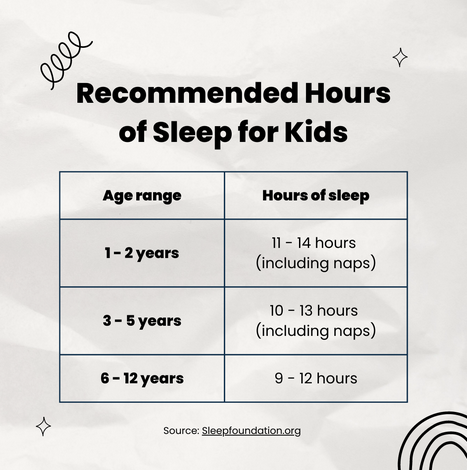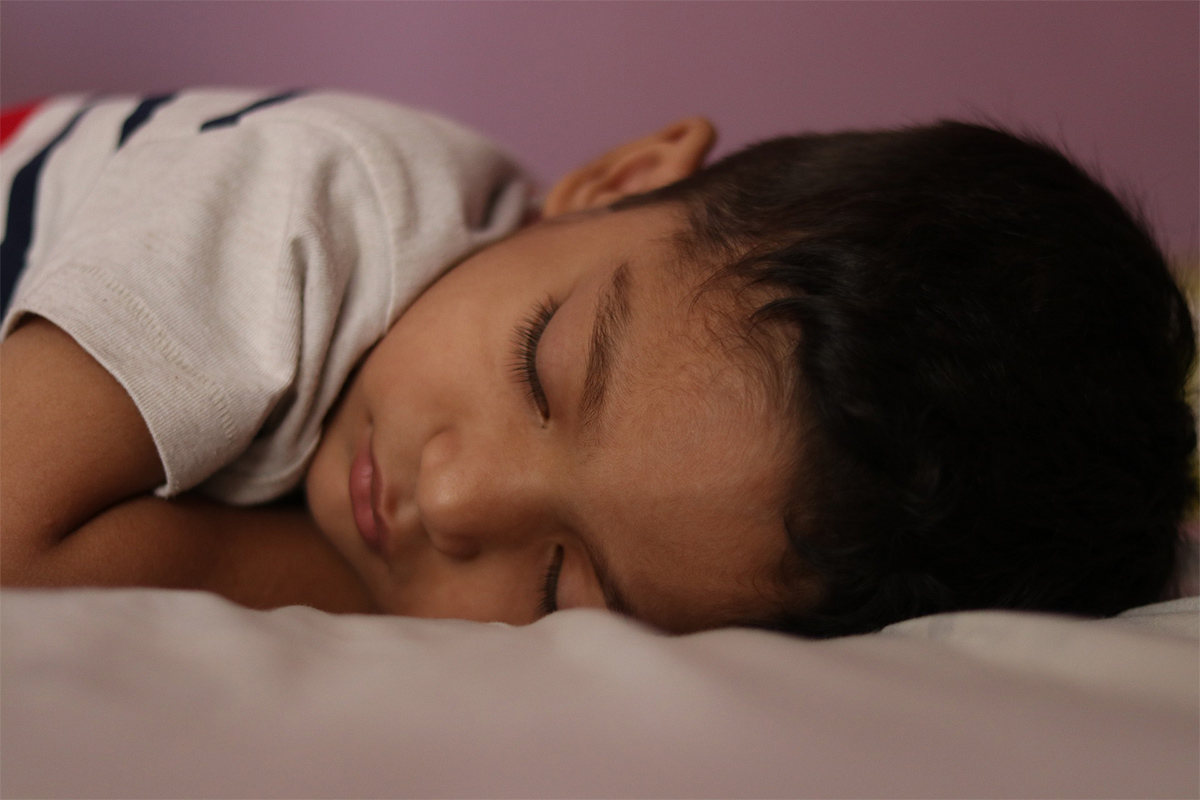Sleep — it’s essential to help us feel good, think clearly, and perform at our best.
Yet everyone, even children, can have occasional trouble falling or staying asleep. They may be excited about an upcoming trip, worried about the first day of school, or just keyed up after the day’s events.
But persistent poor sleep can lead to emotional, behavioural, health, or attention problems. Plus, when one person in the household isn’t sleeping well, it can also impact other family members.
That’s why helping your child develop healthy sleep habits and routines is important. Their ability to self-regulate their sleep will help them now and as they get older.
But establishing healthy sleep routines can be challenging, especially for younger children.
Why good sleep is important for children
Getting consistent restorative sleep is essential for your child’s overall physical and emotional health — improving their brain performance, mood, reducing their stress, and reducing their risk for some health problems.
Additionally, feeling well-rested helps them feel awake, energized, and think more clearly, so they do better at school, at home, and in everyday activities.
But chronic sleep issues can lead to physical and emotional problems, making it important to help children work through chronic sleep problems.
How much sleep does your child need?
The amount of sleep needed varies from person to person. For instance, some children need more or less sleep than others their age.
But there are guidelines established by respected sleep organizations, like the National Sleep Foundation, to help you gauge how much sleep your child needs each day for their age group.
How do you know if your child is getting enough sleep?
You can assess your child’s overall health, activity levels, behaviour, energy levels, and sleep patterns to get a sense of whether they’re getting enough sleep in general.
To help, consider whether your child:
- Seems happy and healthy overall
- Has enough energy throughout the day to participate in school or other activities
- Falls asleep without much difficulty (usually within 20 minutes of going to bed)
- Typically stays asleep throughout the night
- Feels refreshed after waking up in the morning
- Typically doesn’t get cranky or overly emotional near the end of the day
However, keep in mind that some variability in your child’s sleep, emotions, and behaviours is expected. We all have good and bad days. When assessing whether your child is getting enough sleep, think about their behaviors and actions across a broad time frame — not a couple of days.
Here are some strategies to help your child learn healthy sleep routines so they get the restorative rest they need
8 Strategies on how to help kids fall asleep and establish healthy sleep habits
When deciding what sleep strategies to incorporate, you’ll want to consider your child’s overall sleep hygiene.
Sleep hygiene involves both your child’s environment and habits because the quality of sleep can be impacted by things occurring around us (our environment) and by what we do (our habits).
To help, some of the following strategies will focus on establishing a healthy sleep environment, and other tips will focus on setting up healthy habits and routines.
Here are some ways to help your child learn healthy sleep routines so they get the restorative rest they need.
1. Make sure your child’s bedroom encourages sleep
Too much noise or light can interfere with your child’s ability to sleep. For example, the blue light from phones, computers, tablets, and televisions can suppress melatonin levels and delay sleepiness. Bright light close to bedtime can also decrease their sleepiness.
Set up the environment and your night routine to encourage sleep by:
- Avoiding electronic devices an hour before bedtime
- Keep screens (e.g., phones, tablets, televisions) out of your child’s room at night
- Select dim, warm-coloured lights if your child uses a nightlight
- Dim the lights or avoid bright lights an hour before bed for children five and under
- Keep noise near your child’s room to a minimum as possible
- Consider soothing sleep sounds (e.g., ocean wave, rain sounds) or white noise at low volumes, but keep any machines at least 7 feet away from your child’s bed
- Have alarm clocks pointing away from your child if they tend to stare at the clock when trying to fall asleep
- Let them have a stuffed toy or soft blanket to cuddle up with in bed so they feel safe
2. Keep the bed associated only with sleep
Ideally, your child should only use their bed for sleeping. This helps them associate being in bed with sleep instead of with other activities like playing or doing homework.
3. Set a bedtime and stick to it
The exact time that your child goes to bed is less critical than making sure that you and your child stick to that bedtime. You want to set up bedtime that fits your child’s natural rhythms, so they will be getting sleepy around the time to go to bed. Ideally, you want your child to get into bed when they’re drowsy but not fully asleep.
But to be effective, you need to keep the bedtime consistent, including on the weekend. Changing the bedtime between weekdays and the weekend will make it harder for your child to maintain a regular schedule.
Does that mean that they can’t stay up a little later once in a while for a special occasion? No, not at all. But overall, stick to the bedtime selected. As your child gets older, you may need to change their bedtime. But as long as you’re consistent, they will adapt to the new time and schedule.
4. Create a nighttime routine
Establishing a nighttime routine cues your child’s mind and body that it’s time to prepare for sleep. The routine also gives your child a sense of comfort and familiarity and provides a chance for you and your child to bond.
You can adapt the specifics of the routine to fit your child and family. Ideally, the routine should last at least 20 minutes and consist of quiet and soothing activities. That said, you’ll also want to make sure that in the hour before bedtime that your child isn’t using electronic screens (to reduce exposure to blue light) and is engaging in activities that help them wind down. Avoid activities like exercising, active physical play, and video games.
Here are some ideas you can use in a soothing nighttime routine:
- Read books together, although avoid anything scary or too stimulating
- Practice a deep breathing technique to encourage relaxation, like three count breathing (breathe in for three counts, hold for three counts, and exhale for three counts)
- Listen to soft, calming music before bed (avoid music that’s stimulating, loud, or energetic)
5. Calm their mind before bedtime
If your child seems to have trouble settling their thoughts before bed, you can incorporate activities into their nighttime routine to help them calm their thoughts. Here are two activities that can help. You may need to adapt the activities to fit your child’s age.
Worry or thought box activity
A worry or thoughts box can provide a place for your child to “put away” their thoughts for the night so they can sleep.
An hour before bedtime, have your child draw or write down what’s on their mind — their worries, something they’re stressed about, or something that they keep thinking of or want to remember for the next day. Then right before bed, as part of the nighttime routine, have them put the drawing or words into the box. You and your child can then talk about what they drew or wrote the next day.
Using pictures to encourage relaxation before sleep
If your child has trouble “shutting down” their thoughts, you can try this picture activity to encourage them to relax and “tame” their mind.
As part of the nighttime routine, have your child look at a book with pictures or a scene, like a beach, the ocean, or a city. Then spend a few minutes talking about the pictures together.
At bedtime, ask your child to picture the scene in their mind. Ask them to use their imagination and focus on the picture. They can even adapt it in their mind if they want. Focusing on the image can help them relax and calm their thoughts, so they can fall asleep.
For children with active imaginations, you can have them imagine their favorite place instead of looking at pictures.
When using this technique, be sure to avoid scary images or scenes.
6. Exercise early in the day (get outside in the sunshine if possible)
Exercising early in the day can help your child feel more energetic and awake. It can also make it easier for them to focus and sleep better at night and fall asleep faster. When possible, make sure they’re also getting outside in the sun. The natural light can help encourage and reinforce their body’s natural circadian rhythms.
7. Avoid eating too close to bedtime (and skip caffeine)
Eating too close to bedtime can make it hard to fall asleep. Ideally, have your child eat their evening meal at least 2 to 3 hours before bedtime so they have time to digest their food.
Also, avoid letting your child eat or drink anything with caffeine in the late afternoon or evening, including chocolate and soda. The caffeine can make it hard for them to fall asleep or contribute to nighttime awakenings.
8. Gently get your child back into their bed if they get up during the night
It can be hard on you and the family if your child often wakes up during the night and comes into your room. Unfortunately, engaging in long conversations or letting them get into your bed reinforces the behaviour of getting up.
Instead, walk your child back to their room and into their bed. Give them a quick good night and leave. But if your child needs more comfort, you can sit in their room as they fall back asleep.
What can you do if these sleep strategies aren’t helping?
It may take two weeks or more for you and your child to see results from consistently using these strategies. So don’t give up!
But if you don’t see improvements after several weeks of consistently following the tips and strategies, you can:
Talk to your child’s pediatrician or family doctor
Establishing healthy routines and sleep habits help, but it may not be enough if there’s an underlying medical condition contributing to the problems.
Some possible signs of health problems contributing to sleep issues include:
- Snoring or pauses in breathing when sleeping
- Teeth grinding
- Excessive drowsiness or unexpectedly falling asleep during the day
- Sleepiness or lack of sleep is interfering with school or daily activities
- Changes in behavior and mood
- Trouble falling asleep
- Restless sleep
- Difficulty resettling themselves independently (when age appropriate)
- Problems staying asleep through the night (i.e., night waking)
- Trouble waking up in the morning
- No improvement in sleep despite using the strategies
If your child’s sleep issues persist, contact your child’s doctor to discuss the sleep issues and any physical or health issues you may have noticed.
Talk with a psychologist who understands sleep issues in children
Your child’s emotions, concerns, stress, and worries can cause sleep disruptions. For some children, this can also lead to struggles with nightmares. But identifying and helping your child work through the emotions, stress, or worries can help solve or improve sleep problems.
Talking with a psychologist who has special training or experience dealing with sleep issues in young children can help.







